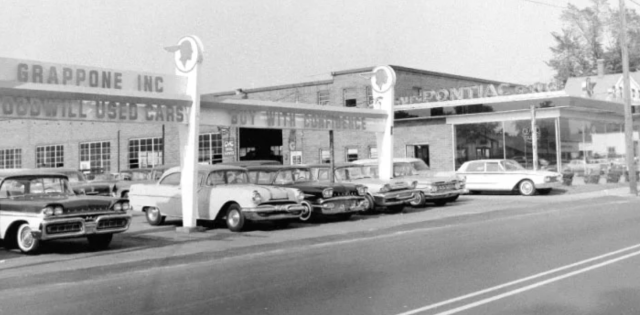The Trump Administration announced in late May that it was initiating an investigation that could result in a tariff of up to 25% on imported automobiles and automobile parts. Under law (Section 232 of the Trade Expansion Act of 1962), the President has broad authority to impose tariffs or import quotas if the Commerce Department concludes that the importation of a specific product adversely impacts national security. This is the same law under which the President recently imposed tariffs on steel and aluminum imports.
The administrative process to evaluate the need to impose tariffs on autos and parts has just begun and is expected to take several months.
Now, we believe the president is rightly concerned with three major things. First is the decline of manufacturing jobs in the United States over the past 40 years. The second is the trade deficit, which ballooned to $568 billion in 2017 alone. And third are unfair foreign trade practices; consider that on autos alone, the U.S. imposes a 2.5% tariff on imports from the European Union, but the EU has a 10% tariff on vehicles it imports from the United States.
The president has been clear and consistent that he wants to cut better trade deals for America, and he’s right to want that. But new and steep tariffs on auto and auto parts imports, if implemented broadly, would hurt the auto industry and our customers.
What is at stake for the auto industry?
First off, today’s auto industry is very different than it was 30 years ago, or even ten years ago. Auto manufacturers are globally integrated, and their supply chains routinely span international boundaries. So, many “international” brand vehicles are assembled here with mostly American-made parts, while some “domestic” brands have models that are manufactured abroad and imported here.
For example, the vehicles in the U.S. with the most American content for model year 2018 are the Honda Odyssey and Ridgeline, both of which are assembled here and include 75% North American components. At the same time, a number of domestic models are actually built abroad – with some having as little as 4% North American content – and imported to the U.S. for sale to U.S. customers. This means that some domestic brands could get hit harder with tariffs than some international brands.
Then there’s the issue of what consumers buy. Today, 54% of the vehicles purchased in America are made by international brands. And while 44% of those vehicles are assembled here, the remaining vehicles would presumably be hit with hefty tariffs that would make those vehicles significantly more expensive – if they continued to be available for sale in the U.S. at all.
Bottom line, broad-based tariffs on autos and auto parts would result in serious unintended consequences. And ultimately, American customers would be left confused, with fewer choices, and paying higher prices.
What would it mean for our customers?
In the worst case, a 25% tariff on new cars and light-trucks likely would result in average price increases in the thousands of dollars. Do the simple math. The average price of a new car sold in America is about $34,000. If assembled abroad and imported with the tariff added on to the wholesale cost, that car would have a $6000+ price increase, putting it out of range for many American customers. Or the importer could decide to no longer import it, reducing customer choice.
But even if it’s a car that’s assembled here, new tariffs on parts and components could still hit Americans in the pocket book. Take a Ford F-150, which is assembled in the United States, but includes roughly 35% foreign components. On a $50,000 new truck, new tariffs on those parts would increase the price by thousands, knocking some American consumers out of the new truck market.
No other country in the world has an auto industry offering what American consumers have come to expect when choosing safe, clean, efficient, and affordable cars or light-trucks for their families or jobs. At NADA, our biggest priority is preserving that consumer choice and affordability.
What is NADA’s approach to these proposed tariffs?
NADA is deeply engaged on this issue. We are scheduling meetings to educate officials in the administration on these realities in the automotive industry. We have urged Congress to exercise oversight on this process and to fully consider the potential economic impacts of any new tariffs. We will file comments with the Department of Commerce this week on the proposal, and will be testifying about the concerns of local dealerships and our customers. NADA is also working on an economic impact study designed to measure the potential impact of tariffs on dealerships and their American customers.
We want to be clear: NADA is not opposed to the president’s goals of addressing unfair trade practices and preserving American jobs. We support those goals because they will ultimately drive growth and be good for our customers.
But overbroad tariffs on autos and auto parts are not the right tools for accomplishing those goals. They will raise prices on new cars and trucks and jeopardize affordability for millions of our customers. That will hurt the automotive industry far more than it will help.










